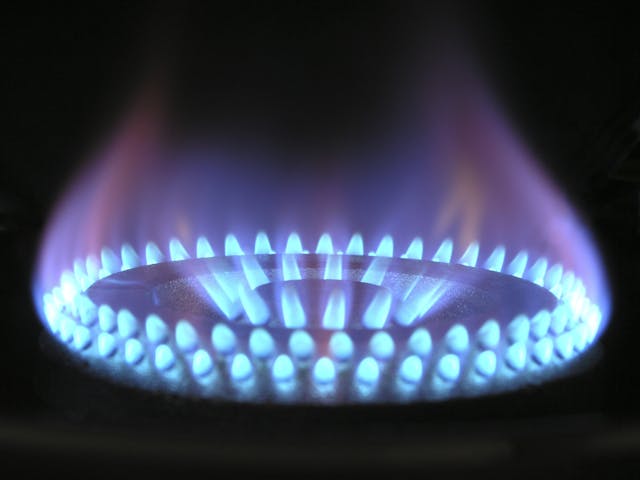
Why do they add a smell to gas? Gas companies add an additive called mercaptan to natural gas so that people can smell it in the event of a gas leak.
The natural gas we use to cook with or to heat our houses and our water doesn’t smell of anything. Natural gas contains many different compounds, but the largest component of natural gas is methane and methane doesn’t smell of anything. Some gases have a very strong smell and some gases don’t smell of anything. This all comes down to our ability to smell and not the gas itself. We have odor receptors in our noses and we are only able to smell molecules that can attach to these odor receptors. Methane is a very light gas and it does not attach to the odor receptors. Research has shown that we are generally able to smell gases that are 15 times heavier than hydrogen and we are unable to smell gases that are lighter. One of the reasons for this could be evolution. Many of the gases that we think smell bad are a signal to us that the source of them is toxic, such as a decaying body, or an open sewer. We might have evolved to be able to smell these gases to keep us safe.
What actually is “natural” gas? Isn’t all gas natural? Natural gas was named in the 1800s and it was called “natural” gas to distinguish it from coal gas, which was made by heating coal. Natural gas came out of the ground naturally and coal gas had to be manufactured. After a while, we pretty much stopped using coal gas and natural gas was the only one left, but the name stuck. These days, a lot of people think the name should be changed because “natural” makes it sound as though the gas is safe, but it is still a fossil fuel and is a huge contributor to climate change.
Natural gas is formed in the same way as oil. Millions of years ago, plants and animals died and sank to the bottom of the sea. They became buried under sand, dirt, and rock, and the pressure and heat began to build up. Over millions of years, the pressure squashed all of this organic material and left coal or oil. When coal and oil are formed, gas is also released. Oil and coal tend to stay where they are, unless they are drive upwards by the moving plates and seismic activity. Gas is often found with the coal and oil, but, because it is lighter, it rises up and gets trapped in pores and pockets in the ground. When the gas comes out of the ground it is called wet natural gas because it contains a lot of compounds, including water vapor. It is sent to a processing plant to have most of these removed before it is shipped or piped for use.
Natural gas has many uses, such as power generation or cooking at home, because it is highly flammable. This is the reason why an odor has been added to it. Because natural gas is colorless and odorless, if there is a leak in a gas pipe, it can build up to dangerous levels and nobody will be able to see it or smell it. When the gas has reached a high enough density, any ignition source can cause it to combust explosively. This is what happened in the New London School in 1937.
An odor has first been given to gas in Germany in the 1880s, but it didn’t catch on because it was time consuming and natural gas wasn’t as widespread as it became. It took the New London School disaster to make it go worldwide. The New London School was a school in Texas, USA. The school was built in 1932, which was right in the middle of the Great Depression, but the town it was in was wealthy due to oil discoveries. With the huge quantities of oil discovered were obviously huge quantities of natural gas. The architects of the school wanted to fit a boiler to heat it, but the school board overrode the architect and went for 72 gas powered heaters throughout the building. Gas leaked out of some of the pipes and steadily built up in the basement under the school. There was no way of detecting the buildup, although many students had complained of headaches. On March 18th, 1937, a teacher turned on an electric sander which ignited the gas. The school was destroyed and 300 teachers and students were killed. A lot of changes were made in the aftermath of this disaster, but the largest one that remains with us was the decision to add an additive to the natural gas so that people could smell it. A compound called mercaptan was added to the gas straight away. It has a very strong sulfurous smell, like rotten eggs. We have evolved to be able to smell sulfur for the reasons I mentioned earlier. Sulfur sends us a strong warning signal. Once the US began to add an odor to gas, it very quickly spread around the world.
The odor is added by having tanks of mercaptan at the processing plant. Each tank is attached to a pipe and they drop drops of the chemical into the gas as it flows past along the pipes. That is enough to give it its odor. And this is what I learned today.
Photo by Pixabay: https://www.pexels.com/photo/burning-stove-266896/
Sources
https://www.thenakedscientists.com/articles/questions/why-can-you-smell-some-gases-not-others
https://indianapublicmedia.org/amomentofscience/gas-odorless.php
https://www.peoples-gas.com/all-about-gas/safety/smell
https://en.wikipedia.org/wiki/New_London_School_explosion
